An interactive public map showing USGS stream gauges and post-fire flood zones can help people track potential risks from floods this summer in the communities impacted by the historic 2022 Hermit’s Peak/Calf Canyon Fire. The Post-Fire Map Creator was one of several online maps built by the GIS team at the New Mexico Forest and Watershed Restoration Institute during and after the HPCC Fire. The maps and more information are available on the Hermit’s Peak/Calf Canyon Resources Hub.
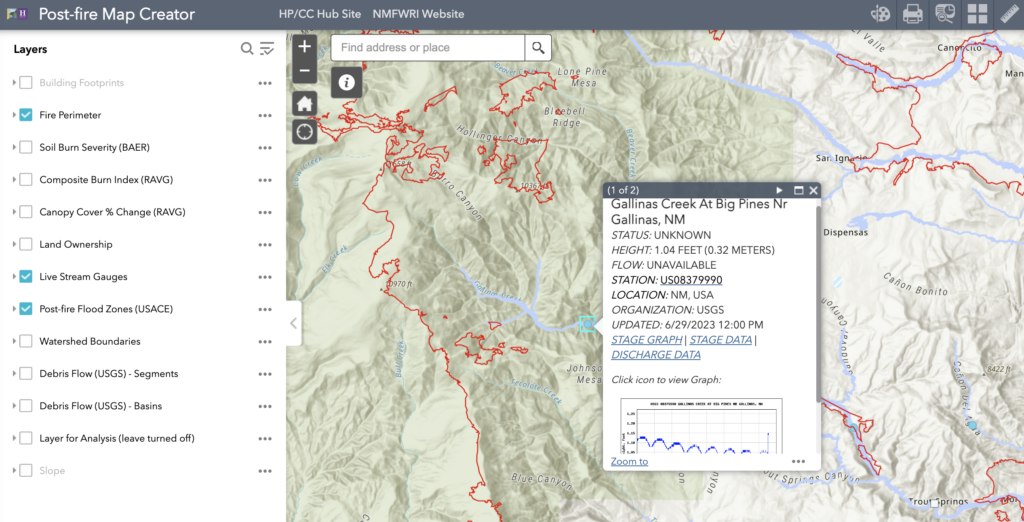
People can also sign up for weather alerts from the National Weather Service in Albuquerque, which will send a daily weather outlook email and flash flood watch texts. For more information and to sign up, email Scott Overpeck at scott.overpeck@noaa.gov.
It has been a year since a heavy rain season and floods washed down tons of burned logs, buried pastures in sediment, destroyed bridges and fences, and damaged wells after the HPCC Fire.
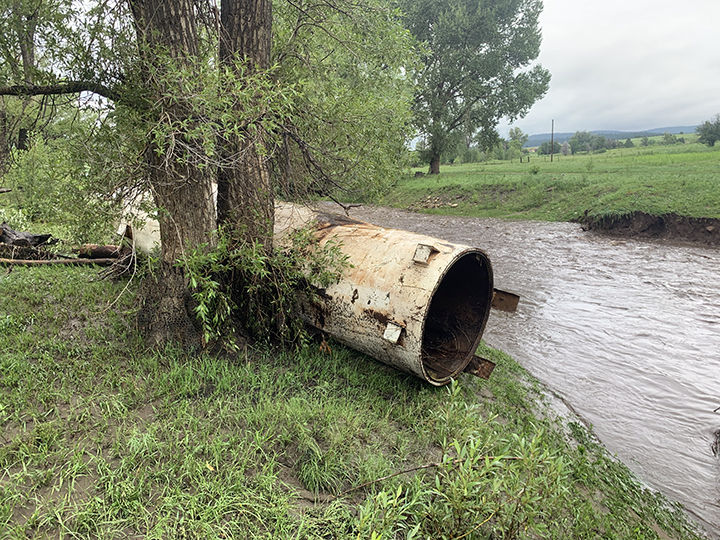
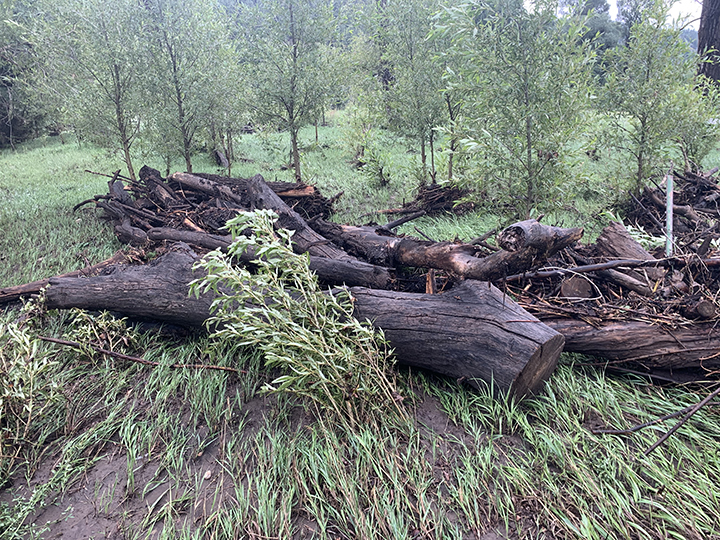
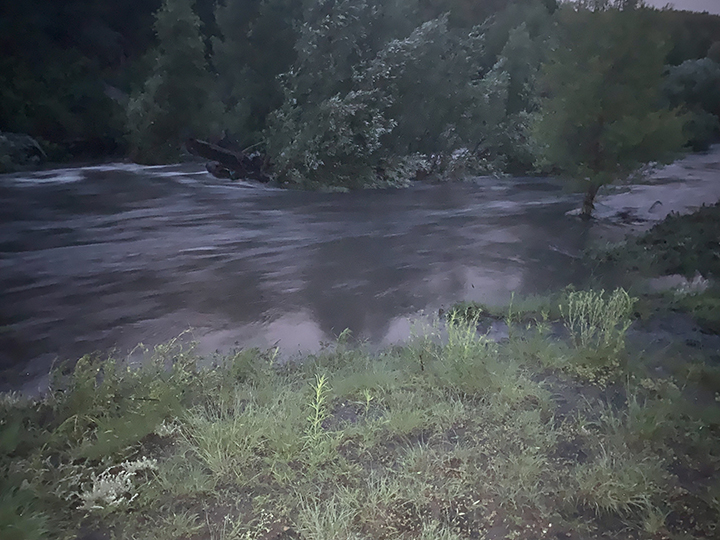
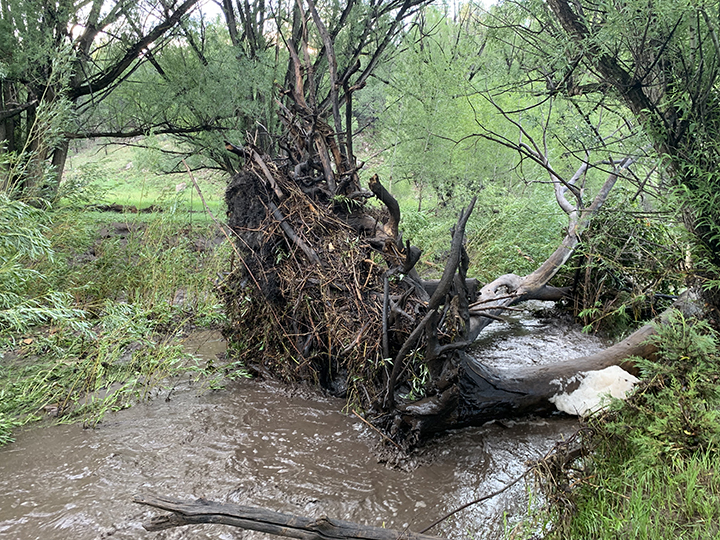
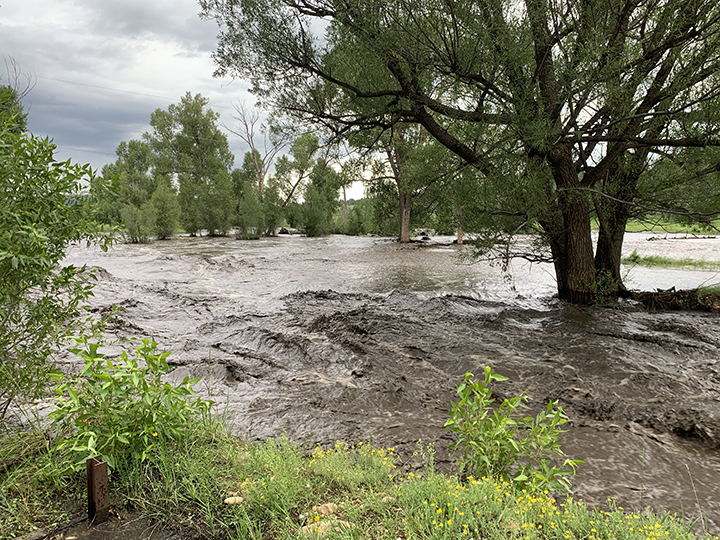
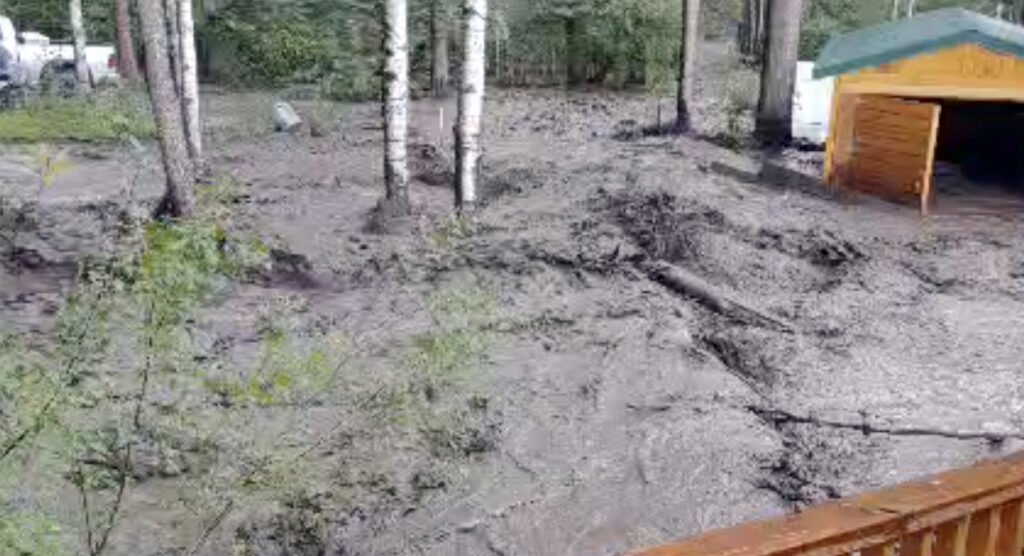
Flood damage risks after wildfires can continue for several years. State and county officials around the HPCC burn scar have been working in 2023 to help residents prepare for and mitigate flood risks. The State Fire Marshal’s office and the New Mexico Department of Homeland Security and Emergency Management worked with San Miguel and Mora county officials to deliver 10,000 sandbags by early June, according to state officials. Residents are able to use the sandbags around their homes and properties to reduce potential flood damage. The New Mexico Department of Transportation continues to work with acequia associations to dig out irrigation ditches filled with sediment. The Natural Resources Conservation Service has expanded a program to mulch and seed across burned properties greater than five acres and has a new program to offer land restoration assessment plans, with cost estimates that are recognized by the HPCC Claims Office.
In addition, volunteer organizations are continuing to help residents remove debris, build fences, plant trees, and work on erosion control measures. The need is big across the HPCC burn scar. And the needs have expanded beyond the HPCC fire as new wildfires impact the area. In May, Las Tusas Fire burned almost 1,000 acres within the HPCC burn scar near Sapello and destroyed several homes.
